
insights magazine | 1 MAGAZINE EVENT MARKETING | VOLUME 23, ISSUE 1 FEATURED ARTICLE Discover What Incentive Travel Can Look Like In Puglia, Italy

contents 02 Discover What Incentive Travel Can Look Like In Puglia, Italy 08 Sustainable Event Design Strategies To Reduce Food Waste 14 Refining Event ROI Strategy: Questions to Address Before You Get Started 18 Applying Elements of Storytelling To Experience Design 22 Creative Ways To Make The Event Experience Memorable
from the desk of ASHLEY BOHNENKAMP
Putting Humans at the Heart of Event Design
Today, events’ crucial “human element” risks taking a backseat, as macroeconomic issues (e.g. supply chain, uncontrollable costs/inflation, labor shortages) caution executives to more critically analyze event budgets and decisions. And it only makes sense in a bottom-line driven business environment. But the attendee experience doesn’t have to suffer, and in 2023, we’re here to ensure the "attendee" can reclaim the spotlight within the overarching event experience.
How? By reimagining event design with a renewed focus on human-centered design. The strategy is two-fold. Beyond positioning brands and event professionals to create experiences that meet today’s attendees’ evolving values, humancentered design helps bridge the gap between two key (and no doubt here-to-stay) event trends.
Trend #1: Highly Personalized Experiences
They’re no longer the exception—events or otherwise. Instead, they’re expected, even demanded. For events specifically, data and technology capabilities support audience segmentation, which enables personalization and ultimately, more authentic brand connection. And it pays. McKinsey’s Next in Personalization 2021 Report reveals that companies who excel at demonstrating customer intimacy generate faster rates of revenue growth than their peers. Putting humans at the heart of event design reveals exciting and unique personalization potential in 2023, and we are eager to integrate thoughtful touchpoints throughout an attendee’s event experience.
Trend #2: Highly Connected Experiences
More than ever before, attendees crave meaningful moments of connection—with each other, local culture and your brand. And, with a larger purpose. The desire for authentic connection is intrinsic, but achieving it in today’s highly connected world is no easy feat. That makes ensuring its relevance within event design is more important than ever, too. Enter environmental, social, and governance (ESG). Diversity, equity and inclusion (DEI) and sustainability are just two ways ESG lives at the heart of ITA Group’s approach to event design.
The Best of All Worlds
Connecting with attendees on hyper-personal and connected levels isn’t mutually exclusive. Brands can incorporate both while navigating macroeconomic issues and prioritizing the return on their investment. Bottom line, there’s new magic on the horizon when it comes to putting humans at the heart of event design.
Ashley Bohnenkamp ITA Group Solution Line Leader, Events

What Is Human-Centered Design?
A problem-solving technique that puts real people at the center of the development process, enabling brands to create products and services that resonate and are tailored to an audience’s needs.

discover what incentive travel can look like in Puglia, Italy

The tantalizing promise of a spectacular trip motivates potential winners to exceed expectations and earn a novel experience they could never have on their own.


Choosing the right destination experience can make or break an incentive travel program. Our expert buyers have researched some of the most amazing —and often overlooked— destinations to illustrate just what an inspiring incentive trip can look like. Our first stop: Puglia, Italy.
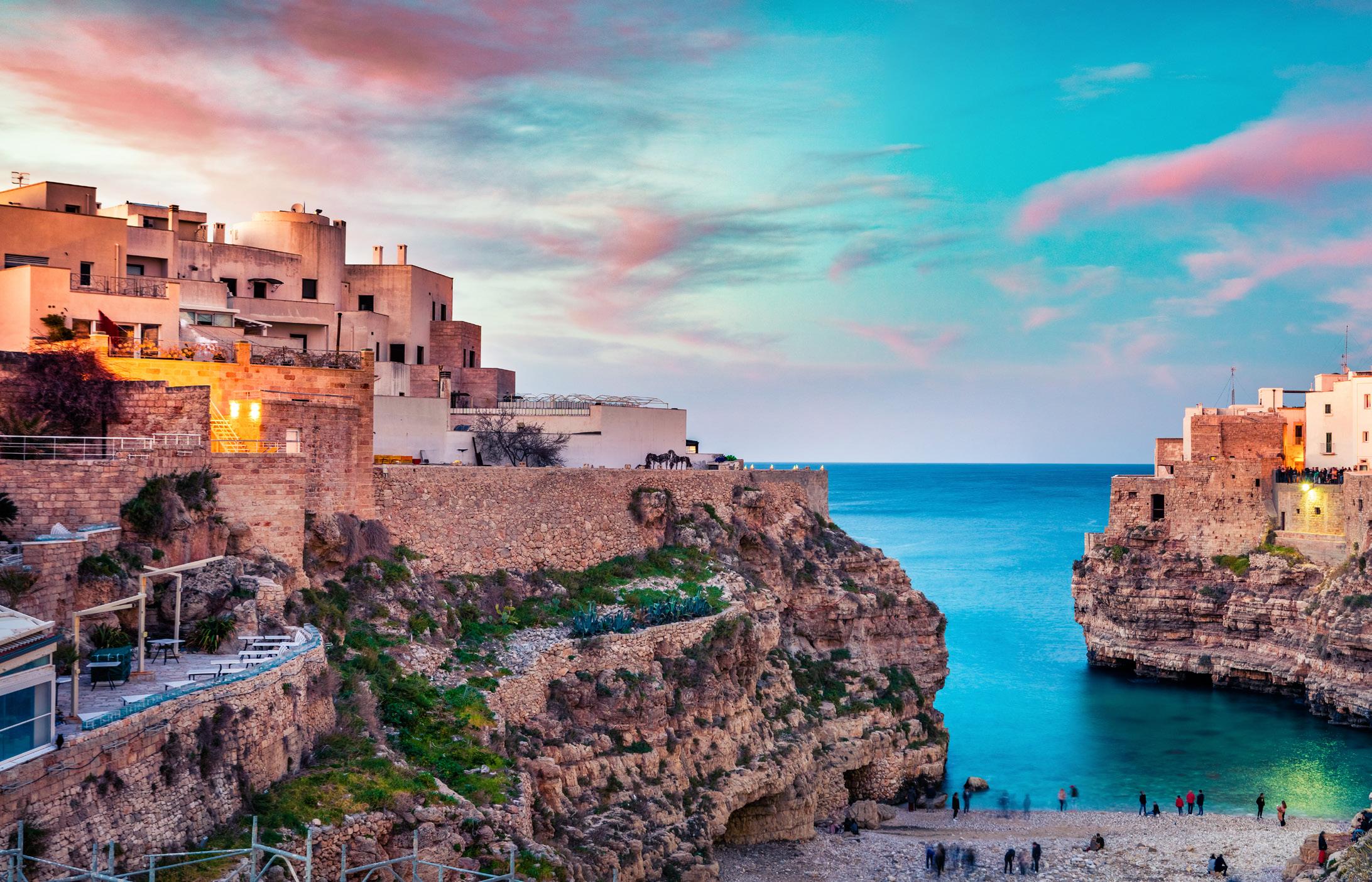
Build Anticipation for an Incentive Trip to Puglia
Imagine you’re a sales rep and you’ve been working hard toward your goals all year—you’re even close to breaking some personal records. You receive a custom mailer in a linen envelope, secured with a branded wax seal. The luxurious details clue you in that this is something special. Something exclusive. Inside is a flyer describing the quaint Italian region of Puglia. It’s a place you’ve never heard of before, but you can tell by the images that it’s got a beautiful, authentic charm. You have a few months left to hit the goal—you can make this happen.
4 | insights magazine
puglia
When designing an impressive incentive travel program, select destinations that are unknown to even the most well-traveled winners. The region of Puglia is a mostly undiscovered gem in southern Italy. Because cities like Venice and Florence are so popular, potential trip winners might feel less inspired by trip experiences they can arrange on their own. Not so much with Puglia. It’s a place even Italians can miss if they aren’t looking.
We Asked Our Buyers: Why Choose Puglia Over Other Destinations?


“Puglia is a mostly undiscovered part of Italy with a great mix of beaches, historic villages and wineries. The accommodations are unique as well. Many of the hotels are converted former farmhouses, so it’s all very authentic.
For large groups, we recommend Borgo Egnazia. It’s a bigger resort, but it has a village-style setup, so it still feels intimate. Depending on the group, we also suggest combining a trip to Puglia with a few days in Rome; the logistics can be tough but it pays off when planned correctly.”
Craft a Puglia Experience Unlike Other Incentive Travel Programs
After the long flight, you approach the hotel to find old-world charm everywhere, and you’re warmly greeted by top executives. Everywhere you turn, there are more top-of-the-line touches: hedges trimmed into the shape of the event logo at the hotel gates, staff greeting you by name, embroidered pillowcases in your room with program branding.
insights magazine | 5
As you make your way to the hospitality lounge, you’re handed a personalized itinerary of activities designed just for you (an itinerary that teases some surprises to come throughout the next few days). You order the special cocktail created just for the program and begin mingling with fellow attendees. It’s been a long day of traveling, but now you get to relax and recharge before the adventure that awaits you.
Highlight what makes Puglia unique with immersive experiences that are unlike anything attendees have seen before.
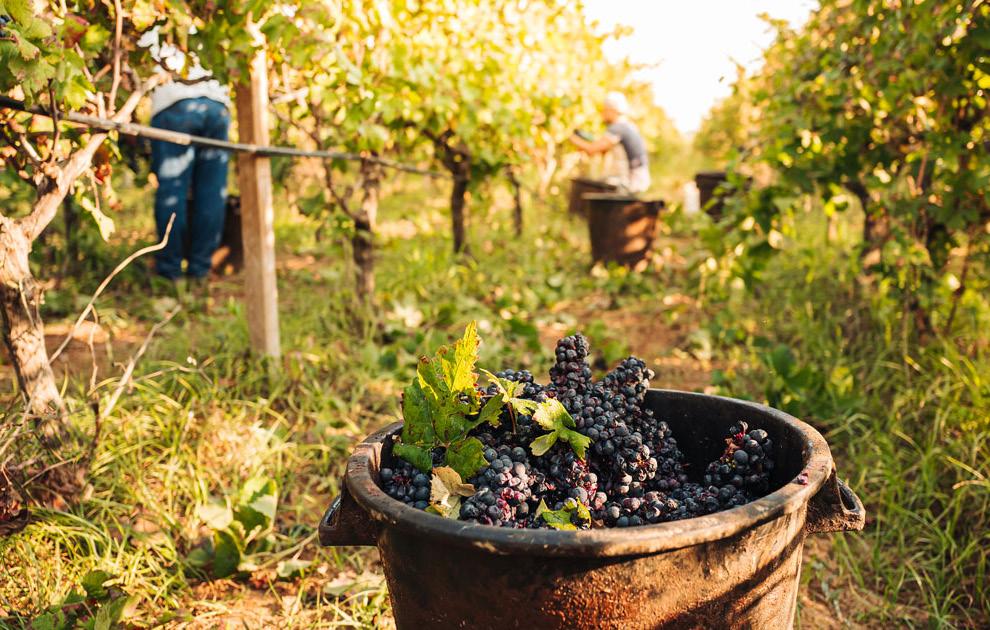
It’s the “nowhere else” moments that make the destination come to life and make attendees feel recognized (as well as motivated to become repeat incentive trip winners).
Consider these ways to custom-craft experiences in Puglia:
> Buy out one of the converted-farmhouse hotels for a truly exclusive feeling
> Create one-of-a-kind shopping experiences, complete with old-fashioned market stalls and local artisans selling their wares
> Include nighttime spectaculars, themed around area festivals to immerse attendees in local culture
> Organize a scavenger hunt with clues at each activity leading attendees to different villages

> Have a local chef give a live pasta-making demonstration at a favorite restaurant
> Provide a personal shopper to hand select items for attendees at top boutiques
6 | insights magazine
We Asked Our Buyers: How Would You Elevate the Puglia Experience?
“One of the great things about Puglia is how everything feels authentic and down to earth— nothing is overdone or forced. For example, attendees can go to a winery and meet the family that owns it. Owners will even prepare a traditional meal followed by wine tasting for attendees. Or they can tour beautiful hillside villages and visit an olive farm that dates to Roman times. Visitors get to be up close and personal with the real people who live in Puglia and will feel like one of the family. Those small, authentic details are unforgettable.”
Use the Puglia Trip to Inspire Repeat Incentive Travel Winners
It’s the last day of the incentive trip, and you reluctantly leave the charming Puglia region behind. As you’re about to leave, you receive one last parting gift—a bottle of wine from one of the wineries you visited. It includes a note from the family member you met, thanking you for visiting their home, wishing you a safe journey and saying they look forward to seeing you again in the future. You smile as you pack it into your luggage, already thinking how you’re going to sell even more to earn next year’s trip—especially since your organization keeps raising the bar like this.
Your top performers will always remember how you left them feeling at the end of the trip. It’s one last moment of joy before heading back to reality. Use the farewell as an opportunity to remind attendees just how magical their time was in undiscovered Puglia. Emphasize the relationships they built on the trip by bringing back a few of the local guides, chefs and storytellers that attendees bonded with during their incentive trip so they can revisit trip highlights and say goodbye to their new friends.
After setting the bar this high, it’s important to gain insights that can be used for future incentive travel programs. Send out post-trip surveys that delve into which elements were successful and which would motivate attendees to become repeat winners.
We Asked Our Buyers: Any Pitfalls to Avoid When Planning a Puglia Trip?

“There’s an hour transfer to the Bari city airport, and many of the return home transfers are very early (think 4 a.m.). You also must transfer flights in Rome to switch from regional to international airports. If you’re flying, it can be a pain. That’s one of the reasons we recommend adding some days in Rome to the end of a Puglia incentive trip for larger groups. There’s even a pleasant train journey from Puglia to Rome that provides an opportunity for a few extra enhancements—like a private train car with a picnic lunch. The train journey is three or four hours long, but it will fly by!”
Excited to see which other locations our buyers suggest? Check out their top 10 incentive travel destinations.
info.itagroup.com/top-10-travel

insights magazine | 7
Sustainable Event Design Strategies To Reduce Food Waste
 By: Carrie Winton, Event Insight & Strategy Leader
By: Carrie Winton, Event Insight & Strategy Leader
As more brands integrate ESG (Environment, Social, Governance) goals into all aspects of their operations and core values, clients are assessing the environmental impact of events. Sustainability can’t be an afterthought for event designers as many are striving to deliver a zero-waste experience.
One step toward a more sustainable event is reducing food waste, a leading strategy for mitigating environmental impact. Studies have shown that in the U.S. up to 35 percent of edible food waste gets tossed each year. According to the nonprofit ReFED, that’s the equivalent of almost 90 billion meals. Yikes! Event catering can be a major culprit. But there are solutions. Smart planning diverts leftovers from the landfill to address another growing crisis: Food insecurity.
Across the country, nonprofit partners are working to connect individuals in need with recovered food from farms, grocers and even large-scale special events.
Identifying strategies to make events more sustainable, like reducing and recovering food waste, are at the front of event design processes.
The following four strategies can make a local impact on globally important issues. Read on to learn how to get started.

insights magazine | 9
Align With Internal Stakeholders & Event Partners
Creating a food waste policy is a great starting place. Whether for a large event or small gathering, it provides universal guidance to the whole organization and demonstrates clear prioritization of food waste reduction. Though circumstances may not always make donation or diversion of food possible, predefined policies can kickstart conversations. If you have an internal sustainability team dedicated to ESG, talk with them about your company’s goals and how your event can support those efforts.
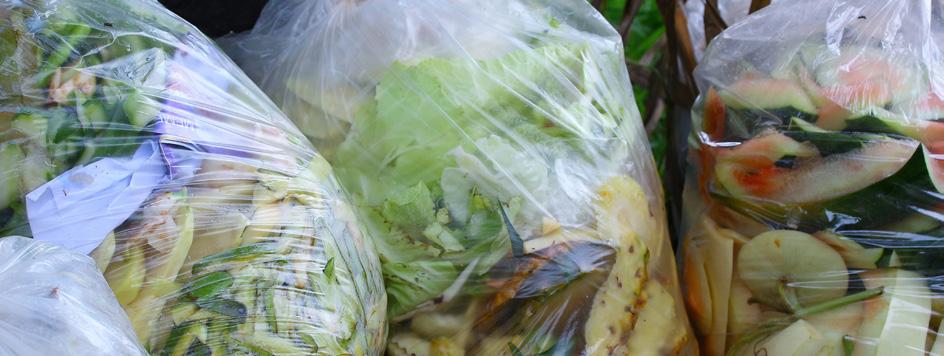
Start by benchmarking efforts against previous event data. Having measurements will help your internal team celebrate the initiative’s impact of your event later on.
Learn what supply chain strategies are currently on the table. Major hotel groups have implemented enhanced sustainability capabilities across their brands. Their focus on internal practices, data and metrics specific to your program, will help you speak to your company’s sustainability priorities. Food service vendors may already have food waste diversion programs in place but often need client support to set them in motion. This could be an opportunity to educate compliance teams on the Bill Emerson Good Samaritan Food Donation Act, which protects individuals and companies from liability for items that have been responsibly donated.
Shrink & Personalize Orders
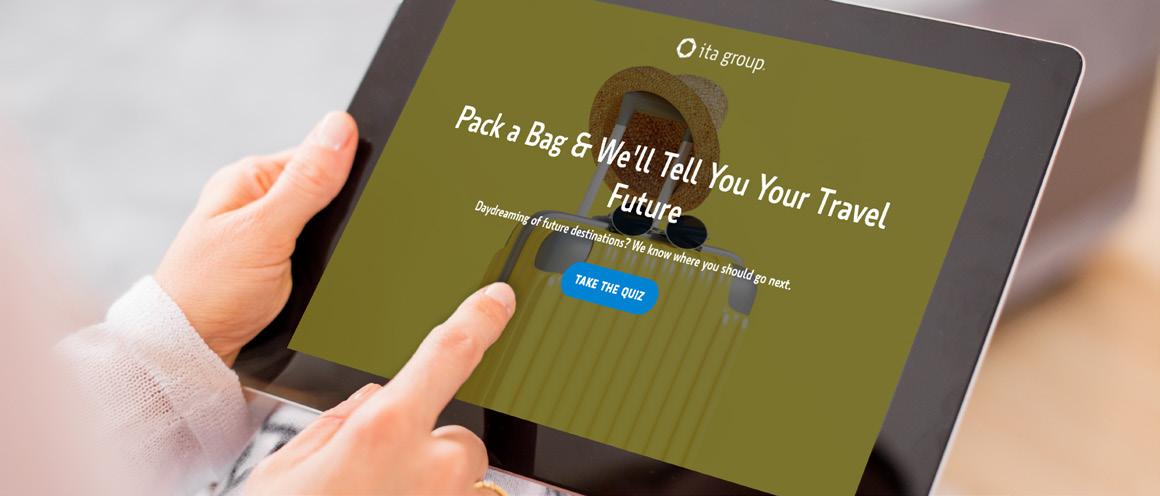
Event Managers tend to over guarantee with their caterers. Nobody wants to feel like they’re fighting over the last piece of chicken or reaching for the lone cookie on the tray. In addition, many caterers build in a “buffer” of additional portions—especially at larger events and buffets.
Since most meetings include absentees or attendees who skip the meals, it may be safe to estimate fewer on your guest counts.
Ask the caterer for options to minimize buffers for some if not all dishes. Guessing what guests will want to eat also often leads to lots of excess portions.
Avoid pre-plating meals. Too often, if someone doesn’t sit at a spot, the salads, desserts, or other items already set on tables are discarded. For smaller events, take meal pre-orders as part of the attendee personalization plan.

10 | insights magazine
1 2
Recycle Food Scraps
Banana peels, apple cores and other food scraps could be composted or even sent to animal feed outlets. Start conversations early so you know what products a composter will accept. (This is a good opportunity to think about menu choices that minimize the need for utensils, too.)
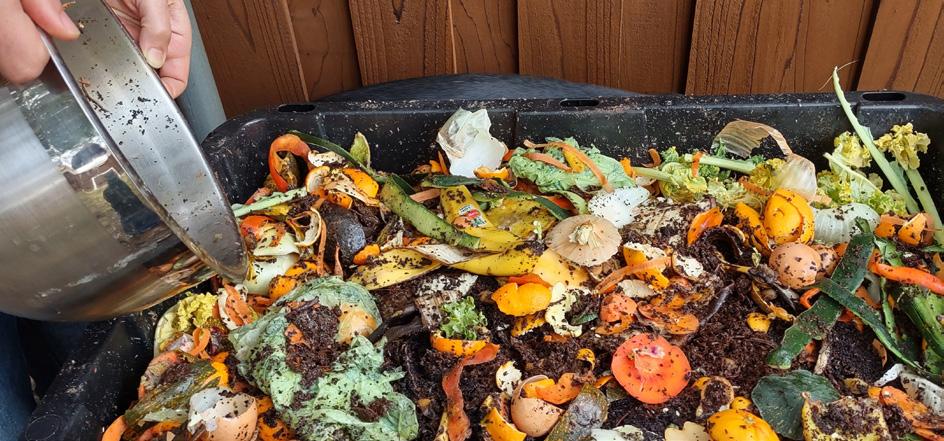
Attendees often don’t pay attention to waste station signage and discard materials into the closest bins, contaminating the stream.
Consider training staff or volunteers to monitor the waste stations, helping to educate and guide attendees on proper disposal.
Use that facetime as an opportunity to hype the next keynote or activity. Offering a behind-the-scenes tour of the property to show how the venue manages food and beverages or grows their own produce in an on-site greenhouse could even be a breakout session, too.
Personalization helps drive event engagement. Read more about how to make collecting data fun for attendees, and take our quiz!
info.itagroup.com/attendee-journey-quiz
Build a Food Rescue Relationship
Food recovery organizations address dual social issues by connecting food-insecure families and individuals with food that would otherwise be wasted.

If your venue doesn’t have a preferred partner for this, numerous national networks can link you with organizations working on the ground in the city where you’re hosting the event. Ask what kind of portions and containers the organizations can accept and plan accordingly.
Here are two common brands to start with:
1. Feeding America is one place to start to access hunger relief nonprofits across the country.
2. Food Rescue Hero network can connect you with organizations that can get event leftovers into community fridges, mutual aid organizations and homeless shelters.
insights magazine | 11 3
4
With proper planning, what’s good for the planet can also help people in need and benefit your budget. Walking the talk by strategically reducing food waste signals to the people involved in your event that you’re serious about sustainability.

Communicating the “why” behind your choices and highlighting food rescue partners within the program should be part of the overall story you share. Explanation and education on those strategic choices go a long way in helping attendees understand the sustainable actions taken on a program.
Investors Aren’t the Only Stakeholders Interested in ESG
Read our white paper on how activating an ESG strategy can help engage employees.


info.itagroup.com/esg-strategy

12 | insights magazine


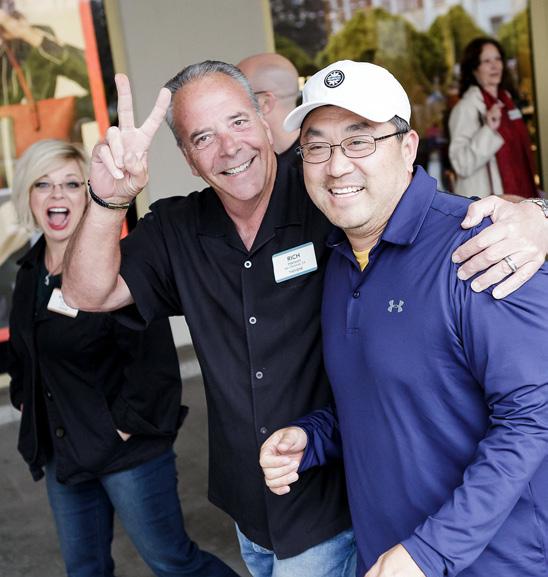


insights magazine | 13 Events | Incentive Travel | Employee Experience | Channel Partner Solutions | Customer Solutions By delivering world-class experiences for your global customers, employees, and channel partners, we see deeper connections with the organization. It’s this connection that drives growth and long-term brand loyalty. itagroup.com/contact-us Jumpstart your plan for growth. Contact us. THE KEY TO COMPANY GROWTH— Personalized, Unique Engagement Experiences ITA GROUP: YOUR TRUSTED ADVISOR SINCE 1963
Questions to Address Before You Get Started
By: Anna Boggs, Analytics Advisor

REFINING EVENT ROI STRATEGY
Measuring return on investment (ROI) for events has become a primary concern for most planning teams. Research from Demand Gen Report shows that in-person events are crucial to many B2B companies’ business: More than half of U.S.
B2B marketers said that in-person events and tradeshows were an effective channel for driving conversions.
Events were seen as more effective than digital channels like email (48%), product demos (39%) and the company website (34%).
Successful (and resilient) businesses will focus on critical workplace learning, whether the effort is reskilling at the business-unit level or a companywide aspirational transformation. The stronger learning capabilities that emerge could stand as a positive long-term outcome.
If you’re an event marketer with an eye to the future, calculating (and proving) ROI must be in your toolkit.

insights magazine | 15
But… what’s different about measuring event ROI?
[(Total Revenue - Total Cost of the Event) ÷ Total Cost of Event] x 100 = ROI
Measuring event impact is more complicated than a straightforward equation. And it’s more specific. There’s a halo effect of an immediate impact of increased knowledge, brand perception lift and emotional engagement after attending an event. But there’s also sustained engagement that comes 3, 6, 12 or even 18 months down the road.
Event ROI could also be intangible. What if success for your brand is social engagement? Or sentiment change? Or prospect value growth? All values and inputs should factor into your event ROI story.
Where Should You Start?
First things first: Determine the ultimate event goal. Is it to generate qualified leads? Attract new employees? Train or educate audiences? Build brand awareness? Launch a new product?
Before anything else is decided, make a list of every goal you can think of, then whittle down the answers to one primary goal—the most important. (The remaining goals are good to keep in mind, but won’t be what you measure success against.)
Aligning your entire content and planning team to what success looks like for your event paves a path for collecting data, asking the right questions and, ultimately, proving the value of the event.
How To Define Event Goals & Objectives
To get your team started with objective alignment discussion, start with a list of areas that classic event metrics or objectives fall in.
Here are typical event focus areas:
> Education: Do you want attendees to understand a certain product line in a new way? Do you want to train them on a specific skill? Is the return you’re hoping for tied to knowledge gains that would translate to higher sales? You need to track both sales and knowledge.
> Brand Perception/Loyalty: Are you measuring what percent of the audience returns? Is someone’s perception of your brand improving? Do people who rate your company higher in the post-event survey than they did in the pre-event baseline end up with higher referrals? Or higher sales? Does their intent to act or take next step in conversion funnel pan out?
> Emotional Engagement: Is your ultimate goal to get people excited? Or feel certain feelings tied to attendance? What data points mean that someone was engaged with your company?
> Advocacy/Amplification: What do social media impressions do for your bottom line? How will they impact referrals? NPS score?
> Momentum/Business Impact: Did we achieve our goals? (These are the ultimate quantifiable outcomes—quality of sales, leads, opportunity value, etc.)
16 | insights magazine
GENERAL ROI CALCULATION
Use Data That’s Already Available

Remember to use the data you have. It could be in another part of your organization, ready for you to leverage. If the data isn’t immediately available, paint a picture for your team of what data points tie to the targeted goals and objectives. If your team or executives need a hard output of ROI, make sure each attendee profile is tied directly to the metrics that matter. An ideal state would be:
1. Tagging attendee profiles within your CRM platform so you can track the lift YOY for attendees versus non-attendees; and,
2. Storing event data within your sales platform.
Are you training salespeople on a certain type of prospecting at the event? If done well, do you expect or hope for higher sales? What’s the length of your typical sales cycle? Would you expect change immediately or would change be seen a year from now? Is there a data point or several data points in your CRM that are tied to the outcome you’re looking for? Have a plan in place to track outcomes to events that happened months before.
Let’s say the main objective at your Sales Kick Off is training the sales team on how to close business faster. At minimum, a few metrics you’d need from the previous year to act as baseline data would be aggregate average time to close and total volume of sales, as well as both metrics by salesperson. To see if other indicators of business closing are happening prior to the sale, consider looking at a few “steps to the sale.”
Measure the return or change that results from the event, then track those same metrics at a few intervals after the event, depending on the length of your typical sales cycle. If you’ve identified the data needed to track and planned for it by creating a custom report in Salesforce or another CRM platform, pulling a report on the post-event metrics is simple. Once you have the data, compare it to your baseline to capture growth in the targeted areas.
Ultimately, any sale or change in outcome and/or ROI is tied to multiple components of engagement on site that tie together. For some teams, lift in one area is the ROI they’re looking for. Or an overall lift in sales measured YOY is enough. Start somewhere even if it’s small. Pick one metric that aligns with your focus areas. Capture the data so you can show return or growth due to the event. Expand the metrics to paint a fuller picture of event ROI and continue building buy-in for the value of the event.
Connect On-Site Moments With Overall Outcomes
The most ideal ROI uses a combination of on-site interaction metrics you’ve targeted before the meeting started and tying those to the expected outcomes. Measure the change that happens YOY as the highest ROI. Then drill into specific event components and their relationship to the outcomes to a more granular event component or activation ROI. If you’re overwhelmed with where to start, we can help.
Demonstrating event ROI to leaders and stakeholders is vital to the future of your event. Are you sharing all the metrics that matter? Download our white paper: Prove Your Event ROI With These 8 Overlooked Metrics.
info.itagroup.com/prove-event-roi
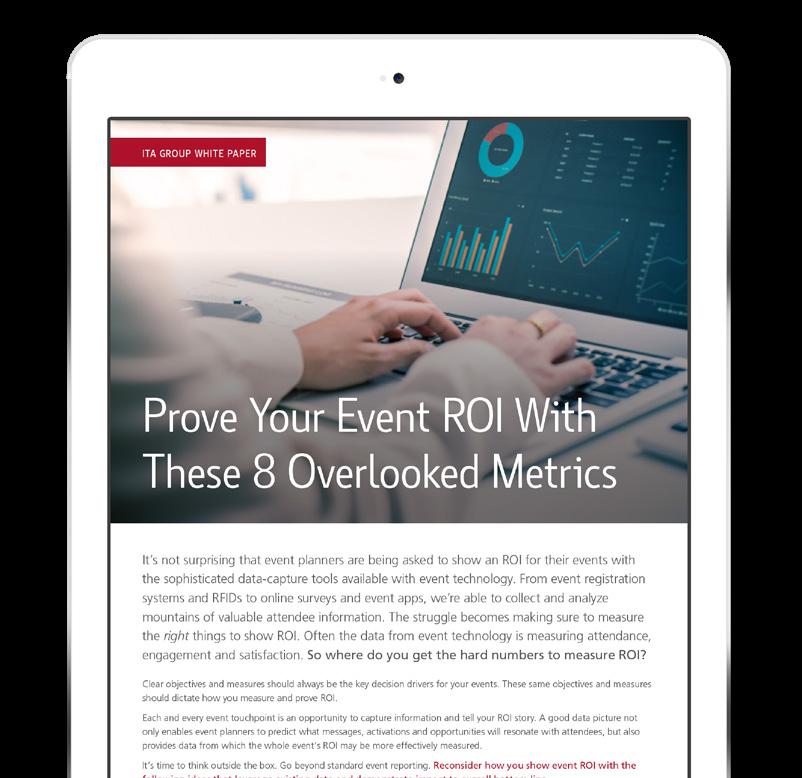
Applying Elements Of Storytelling To Experience Design
By: Erica White, Event Strategy Manager
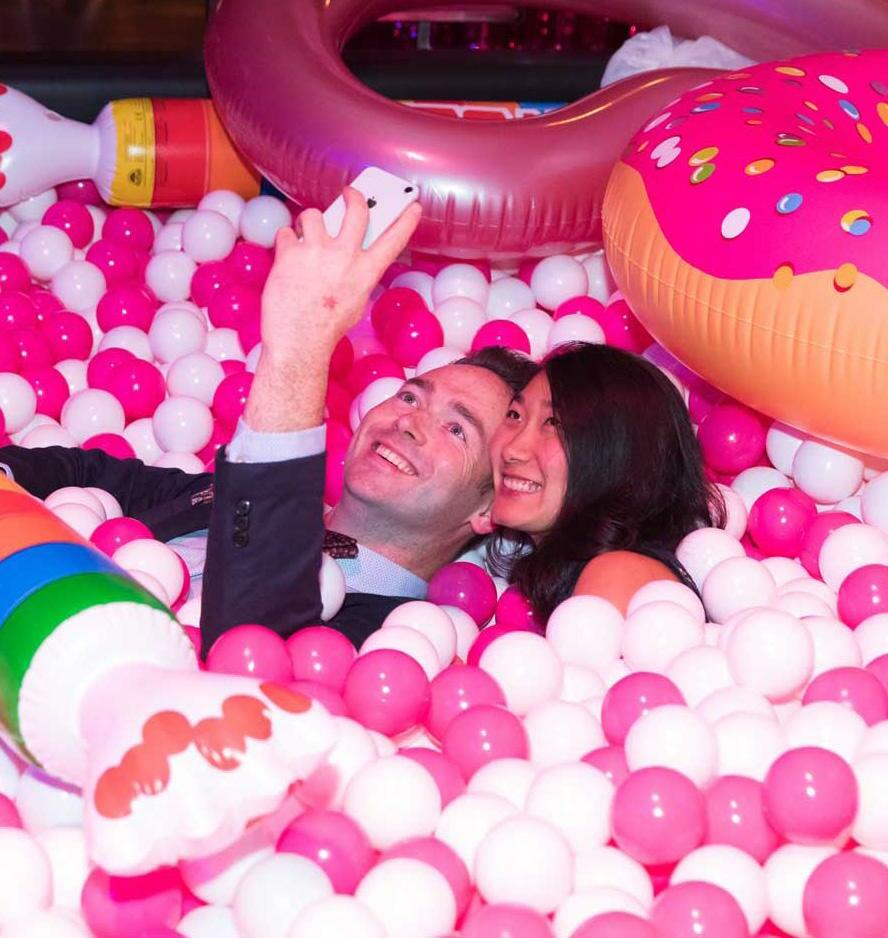
The art of storytelling is essential to the human experience. Stories bond us, sustaining across generations as a source of hope. They help us make sense of our lives and foster empathy for others. Marketers have embraced this truth to build loyalty and drive revenue through compelling campaigns that signal shared values and alignment with their audience’s identity. More recently, event professionals have begun to tap into this trend and consider the impact of storytelling on immersive event design.
Immersive experiences transcend the event theme and weave elements of the brand’s mission and vision into a cohesive story that runs through the

Draw from storytelling patterns to encourage involvement—the more participatory activations for attendees, the more your brand’s event becomes a part of their personal story. Make your brand’s story one attendees want to share again and again.
5 ELEMENTS OF STORYTELLING
Your attendees’ journey is the perfect opportunity to apply the classic elements of a narrative arc. Consider a theme that calls on the natural elements of earth, water, fire and air to tell a client’s story of strength through diversity.
STORY ELEMENT: EXPOSITION
Background information on who, where and when provides the introduction to the story. It primes the audience for the action ahead.
Event Design Element: Personalizing the pre-event experience before winners set off on their journeys is key. The stunning destination of Puglia, Italy, provides a spectacular setting to showcase the powerful convergence of all elements and reflect each through its own color: blue, green, red and yellow. Use a pre-event survey to determine which element winners most identify with, segmenting them so pre-travel gift packages reflect their selections. Items like Italian art glass and Carrara marble candles say “grazie” and infuse a sense of gratitude from the start.
insights magazine | 19
1
STORY ELEMENT: RISING ACTION
A moment that sparks drama and puts the plot in motion. This is when the audience begins to understand what the story is really about.
Event Design Element: Winners arrive at the hotel lobby transformed by lighting that changes daily to reflect the blue, green, red and yellow hues of the day’s chosen element. It’s more than a color palette. From the moment they unpack their bags, they are warmly welcomed into an environment that aligns sensory experiences with meaningful messaging. A menu inspired by molecular gastronomy. Cocktails that unfurl smoke. Give-back activities that plant a seed. (In this case, literally!)
2 3
STORY ELEMENT: CLIMAX
The highest point in your story arc is when all the pieces you’ve introduced meaningfully unite.
Event Design Element: A wow-worthy culminating event puts an exclamation point on the experience. The peak should surprise and delight participants with opportunities they could never re-create on their own. Like a pop-up waterfront disco featuring glow paint, flashing lights and mixes by the hottest DJ. Or a “carnival” village with spinning aerialists. Whisk winners off on a chartered helicopter flight along the coastline and provides jaw-dropping views. Or set the final dinner in a world-famous grotto, where waves crash beneath their feet.
CREATE A CLASSIC
STORY ELEMENT: FALLING ACTION
Now, the excitement gives way to resolution. Loose ends are tied up.
Event Design Element: You want a wind-down, not an abrupt ending to the action. Event gifting can carry the storyline and leave participants with something to hold on to. What better than a room drop of olive oil, cheese and baguette for a farewell picnic to cap off their dream trip? Package this with a Versace-inspired, made-inItaly picnic blanket and Italian leather wine tote so they re-create the experience at home and replay the amazing trip time and time again.
4 5
STORY ELEMENT: RESOLUTION
How your story ends isn’t just a final plot point. It shows how the events of the story have changed the characters—and the world around them.
Event Design Element: The story continues even after winners arrive home. Send a recap video showcasing the top memories made during the trip. The video inspires them to reminisce a few weeks after the event, re-engaging achievers all over again. You can also mail a custom-made book including snapshots of those top moments from the trip.
Some stories stick with us. Think of the books you’ve held on to through the years. We all have favorite stories we keep copies of because they resonate so deeply. By creating a compelling narrative and infusing thoughtful details into your incentive events, you’re helping winners capture a memory they’ll treasure forever.
20 | insights magazine


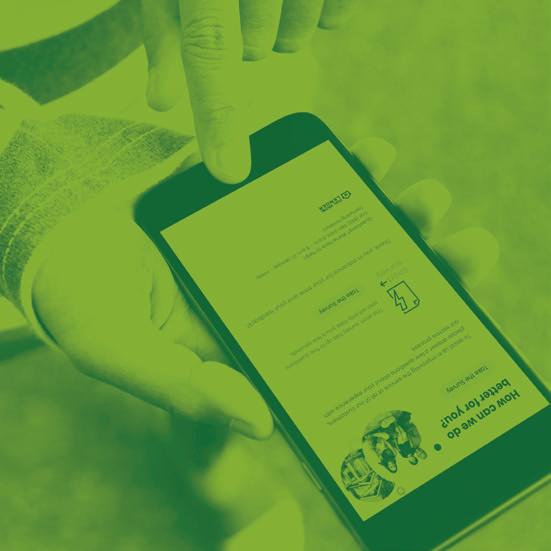

Events | Incentive Travel | Employee Experience | Channel Partner Solutions | Customer Solutions Employees Are Loyal Channel Partner Sales Increase Customers Buy More When authentic connections are made between organizations and their audiences, the results are amazing. ITA GROUP: YOUR TRUSTED ADVISOR SINCE 1963 itagroup.com/contact-us No matter the audience, we’ll help you foster an authentic connection. Contact us to enhance your marketing plan.
CREATIVE WAYS TO MAKE THE EVENT EXPERIENCE MEMORABLE
 By: Theresa Link, Senior Events Buyer
By: Theresa Link, Senior Events Buyer
Think of the memorable scents, tastes and sights that take you back to a time spent with loved ones. Whether the wafting baking aromas filling a kitchen in the fall with a beloved relative or seeing the purple, pink and blue shades of that perfect sunset while on your favorite vacation. The memory is vivid, personal and delivers a rush of endorphins leaving positive feelings in its wake. Engage event attendees using experiential marketing strategies that trigger the same kind of memories and emotions?
Maximizing audience engagement is key to the success of any event, and ensuring attendees can connect with your brand on a personal level will help maximize your investment. It’s important to evaluate how you engage with attendees and find out what inspires and moves them.
ENGAGE EVENT ATTENDEES’ SENSES CREATIVELY & UNIQUELY
Attendees today continue to become more sophisticated and have an expectation your event will satisfy a multitude of senses. Because a sensational experiential event isn’t created accidentally, the following page outlines a few ways to cater to your audience.

insights magazine | 23
Scents
The smell of gingerbread might instantly transport you back to your grandmother’s kitchen. You can see her checkered tablecloth, feel the warmth as you sit on the wooden stool next to her stove and hear her humming along as she bakes. Similarly, the sense of smell can take an attendee back to the event. Enhance the evening function by incorporating smells of the region—local florals or spices—and send guests home with a sensory reminder.
Colors
In the same way that certain scents help us subconsciously remember experiences, colors can guide them, making an event feel energetic and exciting, or soothing and relaxing. Pay attention to the season’s featured Pantone palette (the global authority on color), and incorporate color trends into the event. It will keep the event current and fresh, and use color as an expressive element.
Flavors
Attendees expect their taste buds to be delighted at the event, so consider current event catering trends. Craft cocktails and mocktails are popular, and incorporating local herbs into drinks will help take things up a notch. The fresh take on mixology blends the farmto-table trend into cocktail menus and offers attendees new and inspired flavors. Interested in caffeinated beverage trends? The Teaspessra cart, featured on Shark Tank, offers an interactive brewing element to showcase how tea and coffee drinks can be revamped for a new generation.
Interactivity
Interacting on a personal level will hit on all attendees' senses, so consider incorporating additional interactive elements into food and beverage presentation. In fact, interactivity is a major reason to have a face-to-face event. Things like local, fresh-from-the-garden items featured in a wheelbarrow, drinks served from “bike-tenders,” floating cocktail bars and dim sum-style rolling carts all help create a unique and memorable event experience.
PERSONALIZED EXPERIENCES MAKE YOUR EVENT UNLIKE ANY OTHER
From picking an event venue to ensuring event security, you devote significant time, energy and resources to creating events that stand apart.
Make sure your efforts resonate by designing activities and amenities that can be personalized for higher perceived value. Here are six ideas to try:
1. Make the pre-event experience seamless and streamlined.
Starting with the event registration website, create an online experience before the event that encapsulates what people will feel and encounter at the event. Making the website stand apart is a key way of getting attendees to buy their ticket or register to attend. But don’t stop there. Choosing the right communications tactics builds fervor before, during and after the event.
24 | insights magazine
2. Follow all health and safety protocols to make attendees feel protected.
By making sure there’s a plan in place for mitigating any unexpected risks and being proactively prepared for any emergencies, attendees can relax knowing their safety is a top priority. This peace of mind allows attendees to focus on all the little touches.
3. Help attendees to experience the event destination as a local.
If attendees are heading to a new and/or exotic destination, encourage them to immerse themselves in the culture. For example, team up with a local chef and head to the farmers market to handpick fresh produce from the region. Then, host a cooking class where guests can enjoy their harvest by preparing regional specialties with local cooking techniques. Tip: Allow them to modify the meal to suit their personal tastes.
4. Give your people time to engage with speakers.
In many instances, the chosen event keynote speakers are a big draw—hearing from a top name in your industry might even be the main reason an attendee signed up. Give your people a chance to hang out with top speakers for a once-in-a-lifetime educational experience.
5. Weave in event wellness trends to energize and inspire.
Offering a sunrise yoga session is a great start, but go one step further and follow it up with a class on juicing. Or feature a personal session with a local nutritionist who can customize a food plan attendees can bring home to continue the wellness experience.
6. Feature customizable amenities.
In most cases, one specific gift may not appeal to all attendees, so create a suite of event gifts where they have freedom of choice—one large gift or a few smaller gifts that cultivate an authentic emotional connection.
Or hand out shopping totes and encourage attendees to create their own snack-food amenity based on preference. During the welcome event, help guests create personalized bouquets for their guest room, letting them pick their favorites from a fully stocked flower cart.
Or host gifting bars (boots, jeans, hats and gloves) where guests personally select an item most appealing to them, guaranteeing their lasting enjoyment.
AUDIENCE ENGAGEMENT GOES BEYOND THE EVENT
Don’t just engage with your audience during the event. The event is a journey, not a destination, so create opportunities for measurable event success and continued engagement. Opportunities that help attendees look back on and continuously enjoy the event experience. For more ways to strategically immerse your attendees in your brand and effectively engage with them at your next experiential event, check out our ebook, Growing Your Brand
Through Immersive Experiences
info.itagroup.com/immersive-experiences-ebook

insights magazine | 25

4600 Westown Pkwy West Des Moines, IA 50266 itagroup.com © 2023 ITA Group and/or its affiliates. All rights reserved. Craving More Content? Get the latest tips and trends on the topics you care about right to your inbox. Event Marketing Incentive Travel Employee Experience Channel Partner Engagement Customer Engagement Incentives Subscribe to Insights info.itagroup.com/insights















 By: Carrie Winton, Event Insight & Strategy Leader
By: Carrie Winton, Event Insight & Strategy Leader

























 By: Theresa Link, Senior Events Buyer
By: Theresa Link, Senior Events Buyer


